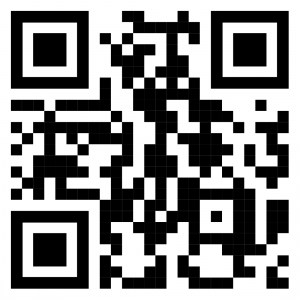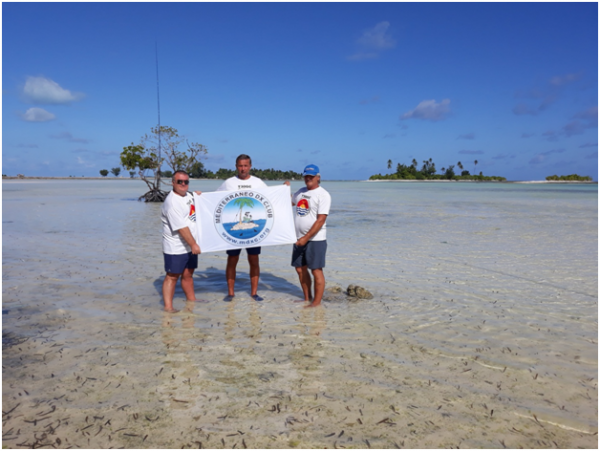
The decision to activate Western Kiribati (T30) on the amateur radio bands was taken by me at the end of January 2019. Initially, I had plans in October and in beginning of November 2019 to activate two destinations in the Pacific, namely: the North Cook Islands – E51 / N, such as E51GC and Western Kiribati – T30, such as T30GC, but after surveys for these two countries in the Pacific and due to urgent commitments in my job, the Northern Cook (E51 / N) option dropped from my plans.
I would like to introduce the readers of this article to some information about the island country of the Republic of Kiribati, an integral part of which is Western Kiribati (T30).
The Republic of Kiribati is located in the central Pacific Ocean, with a population of 110,000, comprising many islands located in the north and south of the Equator.
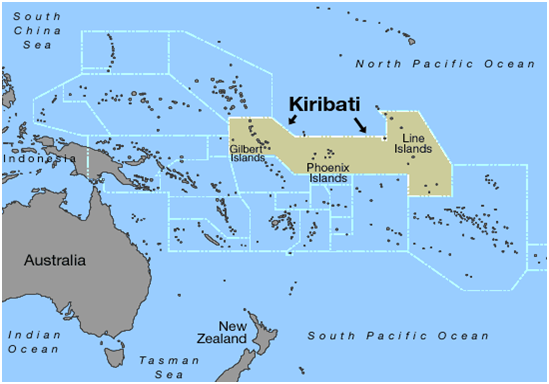
The
main island groups of the Kiribati Republic are the Phoenix Islands, including
Kanton Island and several smaller islands. This group of islands is known to the radio amateur community as
Central Kiribati (T31). To the east of the Phoenix island group is the
Kiritimati Island, also called Christmas Island, which together with several
other islands form the so-called Eastern Kiribati (T32), known as the Line
Islands.
Western Kiribati (T30), also known as the Gilbert
Islands, includes the islands (atolls) – Abaiang, Tarawa and Tabiteuea.
The westernmost island of the Kiribati Republic is
the Banaba Island, known among radio amateurs as T33.
From February until the middle of March 2019, I did a lot of research on the internet and made e-mail contacts with Rolf (DL7VEE) and Tony, 3D2AG to gather enough first-hand information for Western Kiribati, to be familiar when preparing this expedition. Both were already active from Western Kiribati – Rolf (DL7VEE) as a team member of the T30D in 2014 and Antoine (3D2AG) in 2016 as the T30AR. The information I received from them helped me a lot in the preparation of the T30GC DXpedition 2019.
The first thing I did when starting the preparation of this expedition was to develop the itinerary and, according to it, to specify the period during which this expedition would take place – between 2 October and 27 October 2019.
In February 2019, I quickly requested and obtained my required amateur radio license – T30GC.
At the end of the same month I had already booked an accommodation at Dreamers Guesthouse, Ambo, Tarawa atoll, the Western Kiribati.
In
middle of March 2019, I purchased the necessary airline tickets for this
expedition. The route that, I had specified had to be operated by 4 flights and
included the following destinations:
Sofia
(Bulgaria) – Paris, France – Seoul, South Korea – Nandi, Fiji Republic – Bonriki, Western Kiribati.
In the Republic of Fiji (3D2), I had planned a 3-day stay due to the lack of an earlier flight for the last part of the trip – from Fiji to Kiribati.
At that time, after emails and telephones contacts with me, Mitko, LZ3NY and Karel, OK2WM, also joined the T30GC DXpedition 2019. Thus, the number of operators for the forthcoming expedition was increased to 3 persons. Since I had already purchased tickets for the trip to Kiribati and back, I assisted them in purchasing of their tickets.
Whenever I organize DX expeditions, I prefer to do things on my own so I know everything is done right. I have to tell you that there was really no particular desire on the part of the other team members to do anything about the organization of the expedition. So, in practice, the whole organization of the T30GC DXpedition was made by me – as immodest as it sounds!
Getting a T30GC license, booking the accommodation on Tarawa Atoll, Western Kiribati, and purchasing airline travel tickets were just a small part of the organization of this expedition!
As an organizer, I had to anticipate many things that could have happened to us during the trip and the radio amateur activity from Tarawa, Western Kiribati (T30GC).
An important part of organizing of the expedition was to provide sponsors, to support and help us!
Those who have already made radio amateur expeditions to the Pacific are aware of the high cost of excess luggage, as well as the many other payments made during the journey and during the expedition. Activating all of the HF bands and working on the air with several radio equipments is unthinkable without extra luggage, includings antenna masts and other antennas and technical equipment. In many cases, excess baggage payments exceed $ 2,000 -2500 USD.
I have sent requests for financial support for the upcoming T30GC DXpedition 2019 to about 30 Amateur Radio Clubs, Associations and Foundations from all over the world. I am grateful to all who have supported and helped us, depending on their capabilities!
I am impressed by the support, which I receive from Spiderbeam Ltd, Germany and ACOM Ltd Bulgaria in the form of antenna masts and equipment needed for the antennas and technical equipment of all the expeditions organized by me so far. I turn to these corporative sponsors because I know that what they provide me is reliable and secure things!
I have already mentioned that as the organizer of the expedition I was obliged to anticipate everything, starting with ensuring safe and hassle-free travel, ensuring good working conditions on the Air from the chosen destination, as well as successful and safe return of the expedition members after the end of activity.
To accomplish all this and to make the expedition a success, I made several contacts with my great friend Aves Kang (DS2AGH), who is committed to providing our team with everything needed during our stay in Seoul, South Korea.
The success of any expedition depends on logistics and! good logistics is a guarantee for the success of any expedition!
On the way to Tarawa, Western Kiribati, we had a 3-day stay in Fiji, due to the lack of an earlier flight from Nadi, Fiji Republic to Bonriki Airport, Western Kiribati. I contacted Tony (3D2AG) via e-mail and together we decided to pay him a visit at his home in Suva, Fiji on 5 october 2019. The following two days, I planned for us to stay at the “Down town” Hotel in Nadi, Fiji Republic, before our Flight to Tarawa, Western Kiribati on 07 October 2019.
An important step in organizing the expedition, though from a distance, was to provide a good generator for electricity. I had prior information about power failures and frequent power cuts in Kiribati, and without reliable power supply, the expedition would not have been successful! Although at a distance, this issue was resolved relatively quickly. A Honda-3 generator was provided, which was available at our booked accommodation place and which we could use, when needed, during T30GC activity.
Information about the upcoming T30GC DXpedition 2019 was published on the websites of DXNEWS.COM and DX-World.net, as well as on the website of T30GC DXpedition 2019 at www.C21GC.COM on March 13, 2019, but its preparation just started.
The organization and preparation of this expedition took a long time. In addition to the preparation and testing of antennas and technical equipment – it took me about 7 months to organize and prepare the T30GC DXpedition 2019. If anyone thinks that arranging a good expedition takes 1 – 2 months, he is just out of his mind!
The time from April to middle of September went into preparing and testing the technical equipment that would be used during the T30GC activity. During this time, hundreds of meters of wire (about 1000 meters) passed through my hands. In addition to 2 Vertical antennas for 160, 80 & 40 m bands and the multi-band GP antenna (from 40 -10 m), during this period I also prepared and tested mono-banders vertical antennas for 40/30/20/17 m, which we could also use during our expedition. All antennas were equipped with radials, tensioners and tuning boxes. I also prepared backup radials so that we were 100% secure with regard to antennas equipment. During this period I also prepared about 200 m of coaxial cable – at different lengths.
In mid-September, I had a clear vision of how much our luggage was and how it would be distributed between the three of us from the expedition team. While preparing and testing the antennas, I was greatly assisted by Val (LZ1WX) for which I am extremely grateful!
At the end of June 2019, I was unpleasantly surprised by Korean Air that our flight from Seoul, South Korea – Nadi, Fiji Republic is cancelled. It was really not only an unpleasant surprise, but also a big problem – an itinerary already prepared, tickets purchased and one part of our trip missing!
I reacted quickly and changed some of the route, not having to travel directly from Seoul, South Korea to Nadi, Fiji. The change was a trip from Seoul, South Korea to Sydney, Australia and from Sydney, Australia to Nadi, Fiji. So our flights increased by one more in both directions! Still, it was a better option than working out a new itinerary and buying tickets again!
In this situation during our return trip from Western Kiribati to Sydney, Australia we had a scheduled 10 hour stay before our flight back to Europe. I figured it wouldn’t be a good idea to spend that time at Airport or around the airport in anticipation of our next flight. After the end of the expedition and after two flights had already been completed, we would be very tired!
About our stay in Australia (on the way back), I’ve spoken with my friendly family, Bulgarians – Olga (LZ1QG) & Nick (LZ1QP), who have lived for many years in Sydney, Australia. They offered to meet us at the Sydney Airport and to have us as their guests at their house for a few hours before we catch the flight from Sydney, Australia to Paris, France! I would also like to clarify that Olga (LZ1QG) did an excellent job in the early preparation of the expedition, namely in communications with Mrs. Beta, the owner of Dreamers guesthouse, Ambo, Tarawa Atoll, Western Kiribati and also for the contacts with Ms. Cabotera – Director of the Kiribati Telecommunication Commission!
Committed to my permanent job in Bulgaria and working on the preparation of the expedition, the time from March to the end of September passed very quickly.
It’s early morning – 5:30 on 2 October 2019.
I and Mitko (LZ3NY) were at Sofia Airport – Terminal 2.
Since our luggage (about 100 kg) could not be transported in one car – our helpers are Anna – the Chief of LZ1KDP and Ivan Kotev (LZ1IK), a good friend of us and our supporter, each with his car.
After the usual procedures during our Check in at Sofia Airport and after a 3 hour flight by plane of Bulgaria Air, we arrived at International Airport (CDG) in Paris, France.
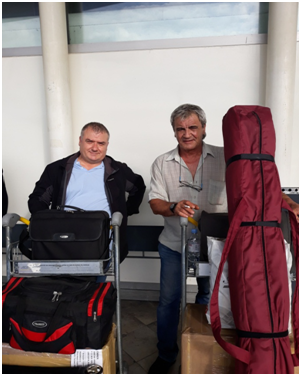
There, at the Paris International Airport, we had an appointment with Karel (OK2WM) who had to arrive by flight from Vienna to Paris to continue our journey together to Tarawa, Western Kiribati.
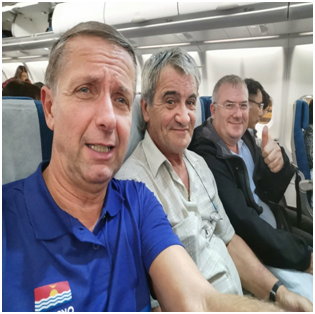
We met Karel as planned at the International Airport CDG in France and the three of us continued our journey with Korean Air (flight KE 902) at 21:00 on October 2, 2019.
On October 3, 2019 at 3:00 PM, an Airbus A380-800 aircraft of Korean Air landed successfully at Incheon Airport, Seoul, South Korea. Our next flight from Seoul to Sydney, Australia was in 3 hours and 30 minutes. I had an appointment with Aves Kang (DS2AGH), who had agreed to bring me the ACOM 700 linear amplifier at the airport, which I had left to him the previous year after 5W0GC & YJ0GC DXpedition 2018.
The meeting took place. Aves Kang was waiting for me at the exit of the “arriving passengers” sector. A hearty handshake and a brief conversation followed, since there wasn’t much time until the next flight. I want to tell you that I feel this person as my brother. Every year he does so much for me and others who are on the expedition team and travel with me. He greets us, sends us off, provides us with lodging, and despite his many business commitments, he devotes so much time to us during our stay in South Korea for it to pass unnoticed and quickly. After meeting with Aves (DS2AGH), our “hand luggage” increased by another 15 kg – I mean the ACOM 700 power amplifier I got from Aves Kang(DS2AGH).
Our journey from Seoul, South Korea to Sydney, Australia lasted almost 12 hours, but it went unnoticed for us. We had a 6 hour stay in Sydney until the next flight, but this worked out well as we needed to take a walk after two 12 hour flights from Paris, France to Sydney, Australia.
At 1:00 PM local time on October 4, 2019, the T30GC team was already aboard the Airbus 330-200 (FJ 910) in anticipation of our departure to Nadi, Fiji.
After a 4 hour flight, at 7pm our plane landed at Nadi International Airport, Fiji. We were stopped here for inspection by Fiji Customs officers for the huge amount of technics we carried, but after explaining to them that we are travelling for an expedition to Kiribati and after showing them our license we were quickly released to continue our journey! We took a taxi in front of the airport. We had a lot of luggage – about 150 kg and we had to hire 2 taxis. I have no idea, after 3 flights what I looked like, but I remember that when I got in the taxi – the driver, named Taki, who was about 30 years old, turned to me and told me: “When I saw you, I said – this is Rambo! Yes I was impressed! “. Understanding that I was from Bulgaria, he kept driving the car and kept saying, “The Bulgarian Rambo”, and we bursted out laughing!
We stayed at the Down Town Hotel, located in the central part of Nadi, Fiji.
In the meantime, we made an appointment with Taki to drive us to Tony (3D2AG) in Suva, on the following day.
So it happened – on October 5, 2019, we spent some unforgettable hours at Tony’s home, 3D2AG. Tony (3D2AG) is a wonderful person and a very good radio amateur. I have known him personally since 2019, but in previous years we have contacted him by phone and e-mail. Writing this article now, I think of the tragedy that struck him, when he lost his elder son in January 2020 … I still can’t believe this has happened! I remember playing football with his two sons when we visited Tony on October 5, 2019. I hope, Tony can overcome this huge loss! I pray for him and his boy!
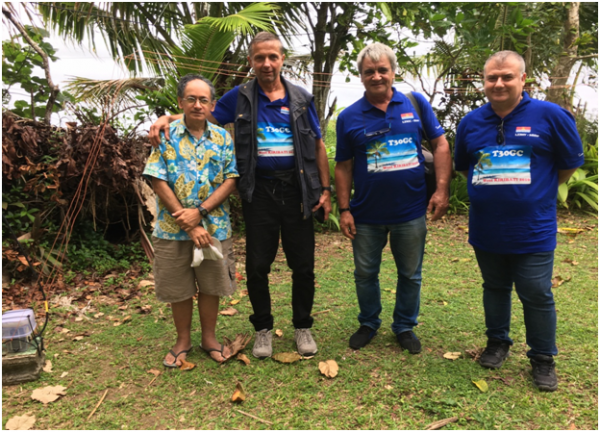
Before we left Tony’s home (3D2AG) we also met with Philip (3D2TS), who lives close to Tony. It has always been a pleasure for me to meet fellow radio amateurs and interact with them. In such meetings, I do not feel “alone”, although in this case I was thousands of kilometres away from Bulgaria!
On October 6, 2019, we had a day off – a day of relaxation, before our flight the following day to Bonriki, Tarawa Atoll, Western Kiribati. In anticipation of our last flight to Western Kiribati (T30), we couldn’t stay in one place. Even the night, before the flight we were able to sleep only 3-4 hours, waiting for the morning. We were excited thinking, that soon we will arrive in Kiribati!
On October 7, 2019, after a 3 hour flight from Nadi, Fiji to Bonriki, Kiribati, at 10:30 local time we arrived at Bonriki Airport, Tarawa Atoll, Western Kiribati.
It turned out that the people from the guest house where we had reservation, had forgotten to wait for us at the airport and to transport us to our accommodation! With the help of an employee from the airport, the owner of the guest house was informed of the problem and after an hour they came and drove us to Dreamers Guest House, Ambo,Tarawa Atoll, Western Kiribati.
After our arrival at the Dreamers guest house, we quickly started installing the equipment, creating three different operators places. Karel (OK2WM) quickly installed his Crank IR vertical antenna for 40 – 10m bands and started working on 20 m, CW using an Elecraft K3 transceiver and linear amplifier Expert 1.3 K. He started with a good rate and the contacts began to grow fast!
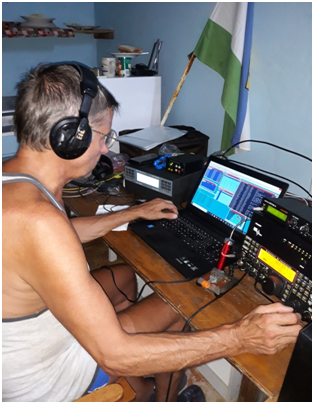
Stan (LZ1GC) and Mitko (LZ3NY) started to prepare the 18 m masts for vertical antennas on 160/80/40 m bands. We had 2 such antennas, but unfortunately, we were unable to install them immediately after our arrival due to the fast approaching evening. At the same time, it struck me that the coastline is very narrow at the time of tide. This was a problem for the installation of our vertical antennas, because the tuning boxes of these antennas would end up in the water at the daily high tides!
The narrow shoreline also proved to be a problem for the installation of my favourite antenna – the multi-band GP antenna designed to operate from 40 to 10 meters bands.including WARC bands.
During the first night of T30GC activity, Karel continued to work at 20 and 40 meters, and me and Mitko (LZ3NY) continued to prepare for the installation of our 160/80/40 m vertical antennas, including mono bands vertical antennas for the 30, 20 and 17 m bands. Early in the morning on October 08, 2019 we started to install the two vertical antennas for 160/80/40 m. That way we had the possibility of working during the night of following days on 160 and 80 m, with two operating places.
In the early afternoon of October 8, 2019, in addition to the Crank IR antenna, we had already installed 2 pieces vertical antennas for 160/80/40 m and one vertical for 30 m.
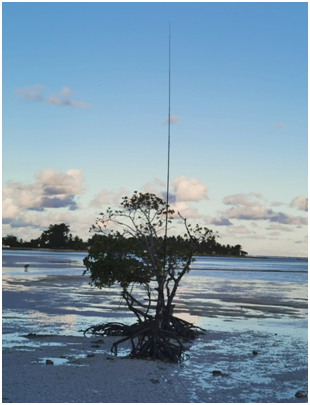
The installation and adjustment of these antennas took us a long time because we had to lift the tuning devices to these antennas about 80 cm from the bottom (base) of the masts. So we solved the problem of rising water levels at the time of tides.
The same day, we started on the Air with 2 more operating places equipped with the Kenwood TS 480 SAT + Linear Amplifier ACOM 1200 S and ICOM 7300, complete with ACOM 700 S.
On October 8, 2019, afternoon, the T30GC was already on the air with 3 operating places on 40/30/20 m, CW. Throughout the night we continued to work on the Air at 160, 80 and 40 meters with two places.
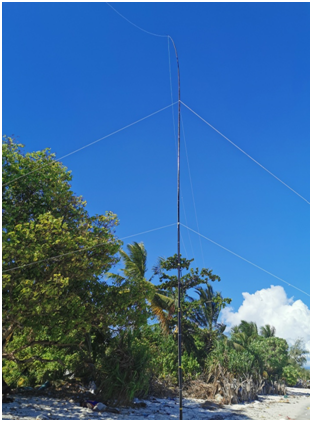
On the 3-rd day of the T30GC activity, we installed a receiving antenna for 160 and 80 m of Array Solution: SAL – 30 and two vertical antennas for 20 and 17 meter ranges, which at high tides turned out to be literally in the water but they worked well.
During the first week of the T30GC activity we were working on CW, SSB and RTTY. Since October, 16 2019 we were also active on FT8 mode. Using the good condition windows, we alternated the bands and modes, striving to transmit without any interruptions on the Air.
My worries about the island’s power supply problems were justified. More than 50% of T30GC activity was with the use of a Honda-3 generator, which luckily worked flawlessly.
Another problem during the expedition was the daily repair of torn radials after the tides. There were days with high winds during our activity, but thanks to Spiderbeam’s resilient and sturdy masts, we had no problems with our verticals.
Despite the problems described above, between October 7 and October 23, 2019, the T30GC was at on the Air all times. Since recent years have been characterized by a period of minimal solar activity and lack of any good propagation on the high bands, our focus has been – more activity on 160/80/40/30/20 m bands, without missing even the small windows of better propagation on higher bands – 17/12/10
I want to share very briefly the good attitude of the local people towards us.
We had the full support of the locals we contacted during our stay in Tarawa Atoll, Western Kiribati. Whenever we needed anything, we met the support not only of the people at Dreamers Guest House – Mr. Ata and Mrs. Beta, but also of their neighbours.
We did not have any problems with the locals, although part of the antennas and their radials, took some place from their yard!
From 3:45 AM GMT on October 7, 2019 to 6:05 PM GMT on October 23, 2019, the T30GC made 20164 contacts on all HF amateur radio bands: 160 to 10 m, in CW, SSB, RTTY and FT8 modes.
I will remember this expedition especially with the many contacts on low bands! The contacts on the other bands were enough many and also impressive!
I provide the readers with a statistic of Clublog about T30GC activity.
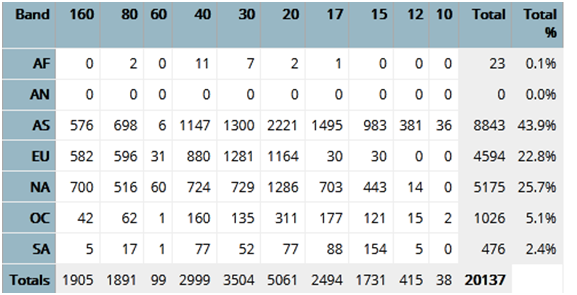
On October 23, 2019, at 6:10 AM GMT, T30GC went in QRT and finished his activity and We began to quickly dismantle the antennas and pack our luggage.
At the end of the previous day, we had carefully dismantled some of the antennas so that despite our limited time, we were able to cope with the preparation of our luggage for our upcoming trip. Our long journey back to Europe began with a flight from Tarawa, Western Kiribati to Nadi, Fiji.
At Nadi Airport, Fiji, despite our short stay, we had an appointment with Tony (3D2AG) which took place. We gave Tony (3D2AG) an 18m Spiderbeam Fiberglasspole mast as a gift, which he can use for his forthcoming expedition to Rotuma and after a short but very cordial conversation we headed to the sector for our next flight to Sydney, Australia.
On October 24, 2019 at 10:10 PM, after 4 hours flight : Nadi, Fiji – Sydney, Australia operated by Fiji Air, the T30GC team arrived at Sydney, Australia.
At Sydney airport we were greeted by my friendly family of Bulgarians – Olga (LZ1QG) and Nick (LZ1QP) who drove us to their home, about 30 km from the airport. We had nearly 8 hours until the next flight and we spent many pleasant hours at their home, for which we are very grateful.
On October 25, 2019 at 5:45 pm, after a 12 hour flight Sydney, Australia – Seoul, South Korea, with Airbus 330-300 (KE 122) on Korean Airlines, we arrived at Incheon Airport, Seoul, South Korea. There waiting for us were Aves Kang (DS2AGH), along with two of his business colleagues. In the following few hours, we enjoyed of the wonderful Korean food (cuisine) in a local small diner place. In the evening we stayed at a local hotel – Punta Star, before our upcoming 12 hour flight on the following day to Paris, France.
The flight Seoul, South Korea – Paris, France on October 26, 2019 was 12 hours. After so many sleepless nights during the expedition, we took advantage of the long flight and spent most of the flight time in sleep. So, time passed unnoticed and at 6:30 pm on October 26, 2019, the Korean Airlines Airbus A380 -800 aircraft landed at International Airport CDG, Paris, France.
There at the International Airport CDG in Paris, more than 12 hours of stay until our last flights followed: for me and Mitko (LZ3NY) to Bulgaria, and for Karel (OK2WM) to Vienna, Austria and after that to Czech Republic.
Finaly, in the evening of October 27, 2019, we all went home.
That’s how the T30GC DXpedition 2019 ended.
We, the T30GC operators, are very happy to have done our utmost for the success of this expedition, that we delighted many radio amateurs with a new country!
We are very grateful for the support we received from many individual sponsors – before and after the expedition!
We are extremely grateful for the support which we have received in carrying out this expedition from all Amateur Radio Foundations, Associations and Clubs, such as:
German DX Foundation, Swiss DX Foundation, FEDXP Foundation, CDXC (U.K.), European DX Foundation, LA DX Group, GM DX Group, Clipperton DX Club, LYNX DX Group, Mediterraneo DX Club, Thracian Rose Club, South Eastern DX Club, South West Ohio DX Association, West Virginia DX Association, Oklahoma DX Association, Lone Star DX Association, National Capitol DX Association, Long Island DX Association, Twim City Dx Association, Greater Milwaukee DX Association, Great Southern DX Association, Nothern Ohio DX Association, Willamette Valley DX Club, North East Wisconsin DX Association.
We, are very grateful to our corporate sponsors for their support, namely: Clublog, ACOM Ltd – Bulgaria, LZ Antenna, Spiderbeam Ltd – Germany and GES Electronics.
In the end of this article, We hope that the T30GC DXpedition 2019 will leave good and lasting memories among the radio amateur community!
Here’s to new meetings on the air!
With respect!
73! Stan, LZ1GC ( T30GC )
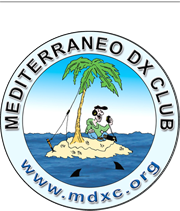

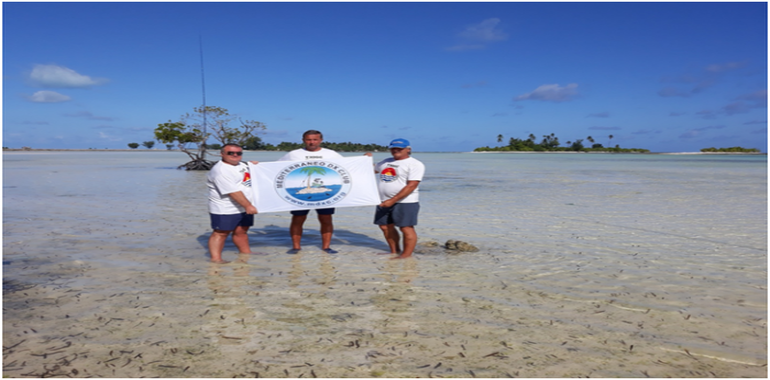
 3B9DJ Rodrigues
3B9DJ Rodrigues  VU4AX Andaman
VU4AX Andaman

